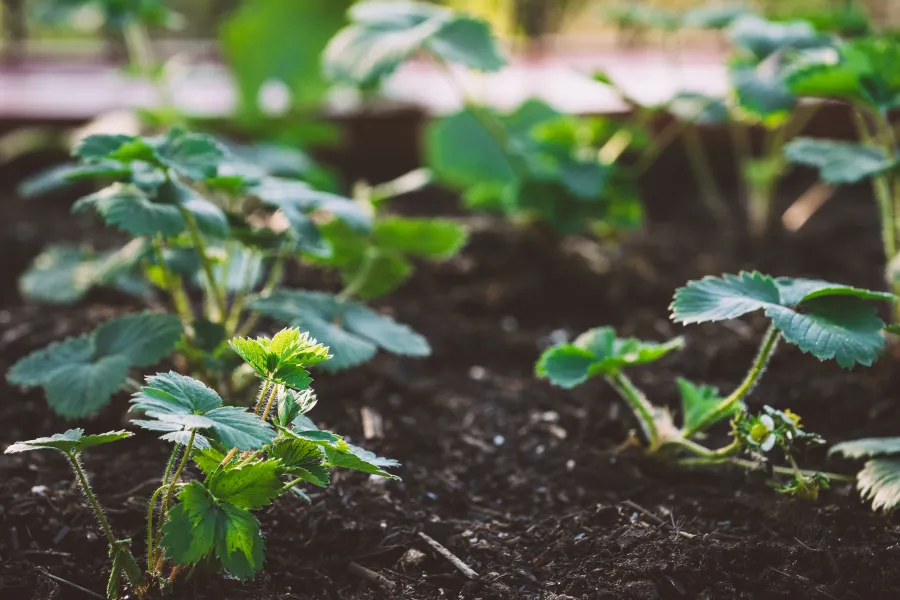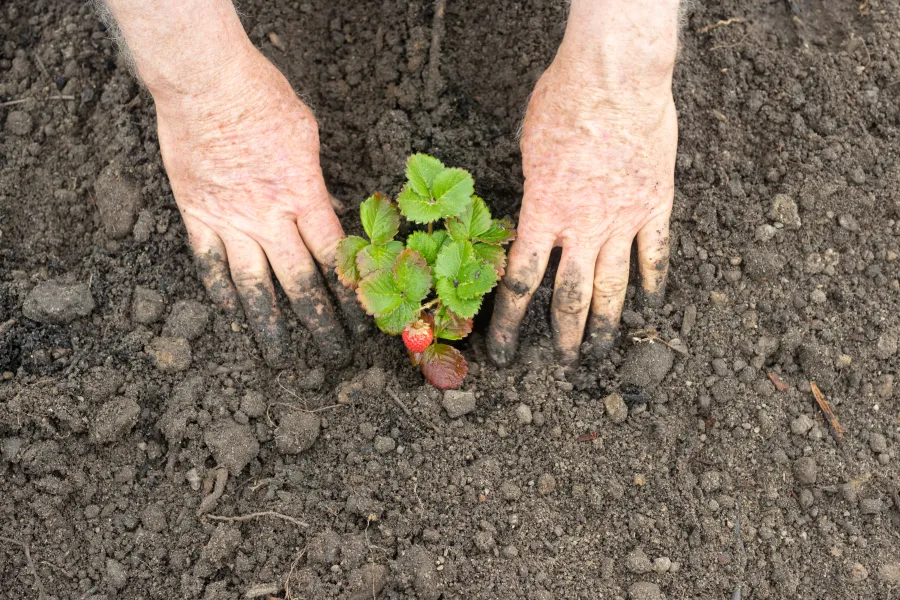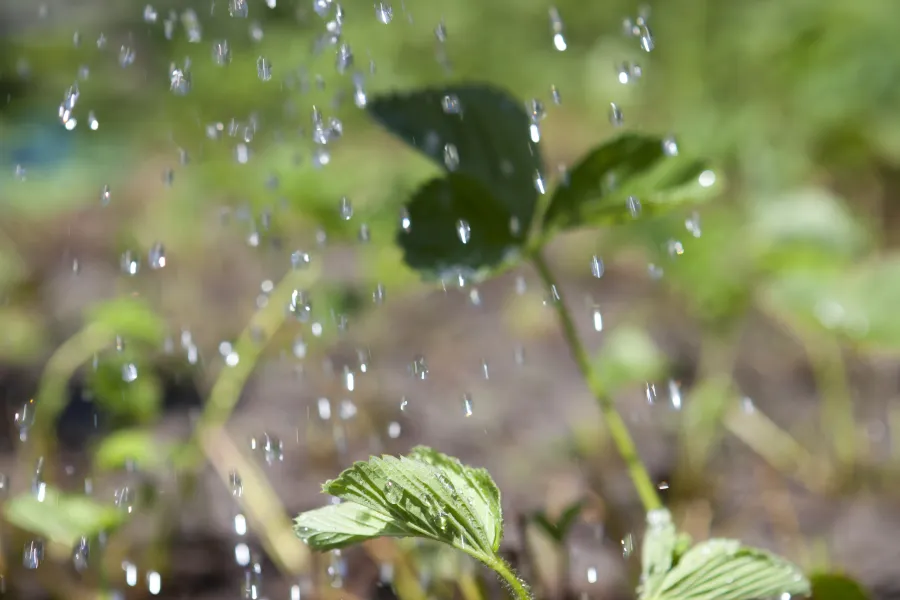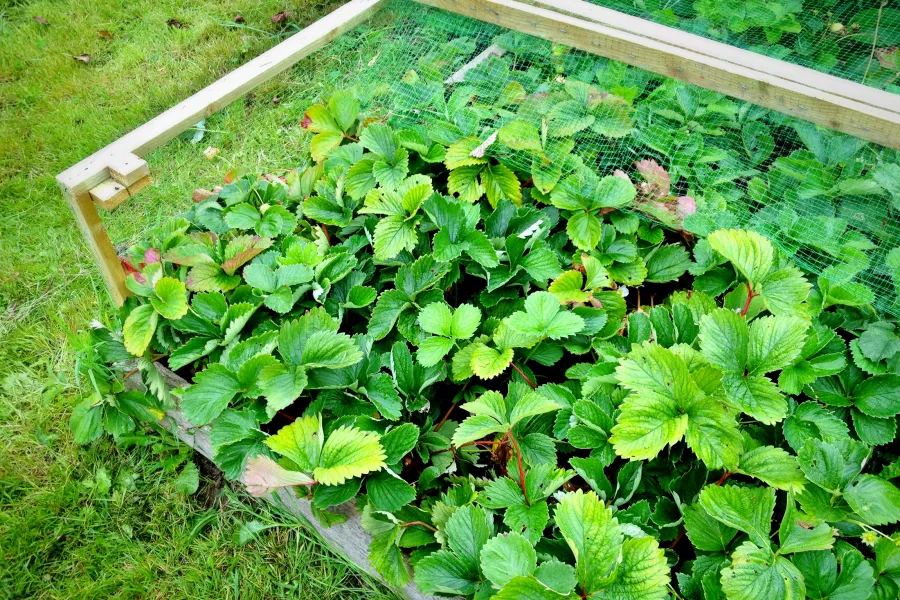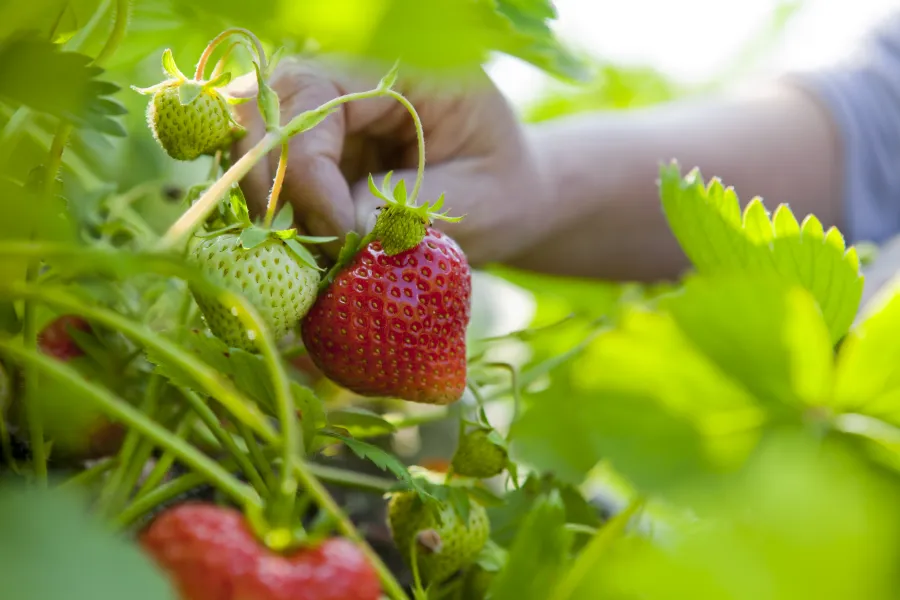
Grow Your Own
Strawberries
Delicious, Fruity & Fresh
Growing Strawberries
Strawberries are easy and tasty plants to add into your vegetable garden, to grow in patches in your landscape, or to grow in containers. Strawberries not only brighten up your garden, but they provide delicious health benefits. Packed with vitamins, fiber, and particularly high levels of antioxidants known as polyphenols, strawberries are a sodium-free, fat-free, cholesterol-free, low-calorie food. They are among the top 20 fruits in antioxidant capacity and are a good source of manganese and potassium. In addition to their numerous health and garden benefits, eating a sun-warmed strawberry straight from the vine never gets old.

Shopping List
- strawberry plants
- fertilizer
- garden soil
- a pot or plot of land


